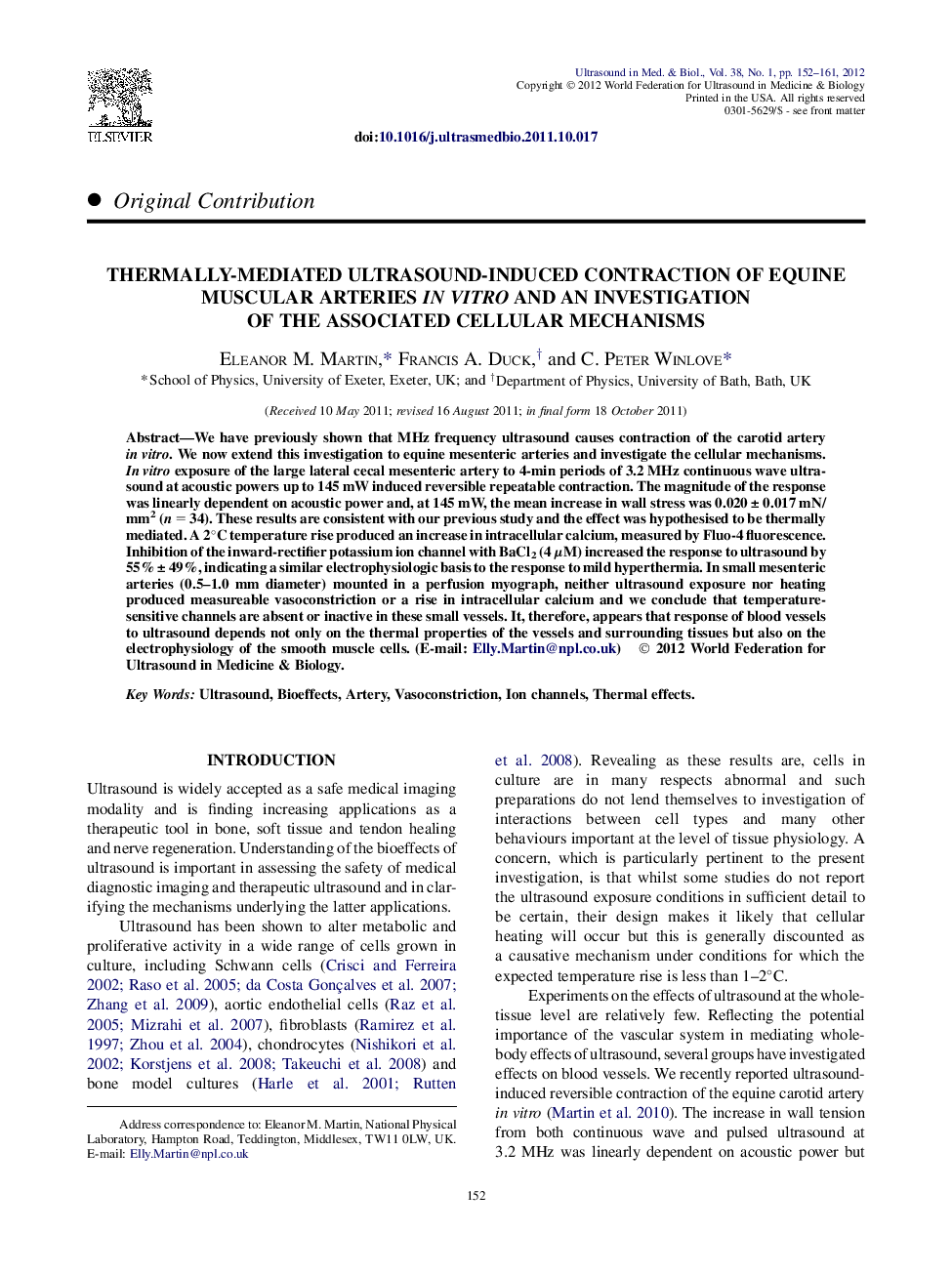| Article ID | Journal | Published Year | Pages | File Type |
|---|---|---|---|---|
| 1761575 | Ultrasound in Medicine & Biology | 2012 | 10 Pages |
Abstract
We have previously shown that MHz frequency ultrasound causes contraction of the carotid artery in vitro. We now extend this investigation to equine mesenteric arteries and investigate the cellular mechanisms. In vitro exposure of the large lateral cecal mesenteric artery to 4-min periods of 3.2 MHz continuous wave ultrasound at acoustic powers up to 145 mW induced reversible repeatable contraction. The magnitude of the response was linearly dependent on acoustic power and, at 145 mW, the mean increase in wall stress was 0.020 ± 0.017 mN/mm2 (n = 34). These results are consistent with our previous study and the effect was hypothesised to be thermally mediated. A 2°C temperature rise produced an increase in intracellular calcium, measured by Fluo-4 fluorescence. Inhibition of the inward-rectifier potassium ion channel with BaCl2 (4 μM) increased the response to ultrasound by 55% ± 49%, indicating a similar electrophysiologic basis to the response to mild hyperthermia. In small mesenteric arteries (0.5-1.0 mm diameter) mounted in a perfusion myograph, neither ultrasound exposure nor heating produced measureable vasoconstriction or a rise in intracellular calcium and we conclude that temperature-sensitive channels are absent or inactive in these small vessels. It, therefore, appears that response of blood vessels to ultrasound depends not only on the thermal properties of the vessels and surrounding tissues but also on the electrophysiology of the smooth muscle cells.
Related Topics
Physical Sciences and Engineering
Physics and Astronomy
Acoustics and Ultrasonics
Authors
Eleanor M. Martin, Francis A. Duck, C. Peter Winlove,
